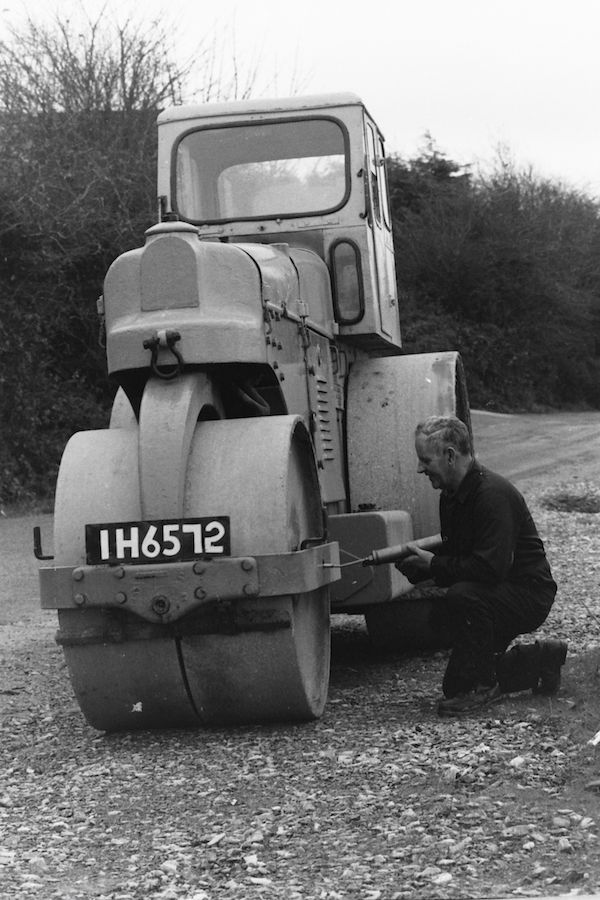It only seems like yesterday since I took these black and white photos of the Donegal County Council when they arrived in Glencar in Letterkenny to tar the old Glencar Road for the first time.
Before that, the road was tarred up as far as the 30 mile speed limit at the upper road into Fernhill which also was the town boundary at the time.
From there up the old Glencar Road was just a small lane with grass in the middle of the road at the edge of the town boundary. In the meantime, a quarter of a century has passed by.
What was a familiar sight on the roads in the decades before that in Donegal the big steam roller, as we called it which was not powered by steam at all but was diesel.
The council were there a few weeks and there was a good few working on the job but the memory that stands out for me was that of the big old roller. I got to know the driver of this fabulous and well preserve machine as the council widen our road a bit and put a tarred road that passed by our house.
The late Peter Kelly from Glenmore outside Ballybofey was the driver of this 1940 or 1950s roller. And one of the days that I saw Peter out doing a bit of daily care and inspection of the massive wheels and the manual steering system on the roller I stopped to have a wee yarn with him.
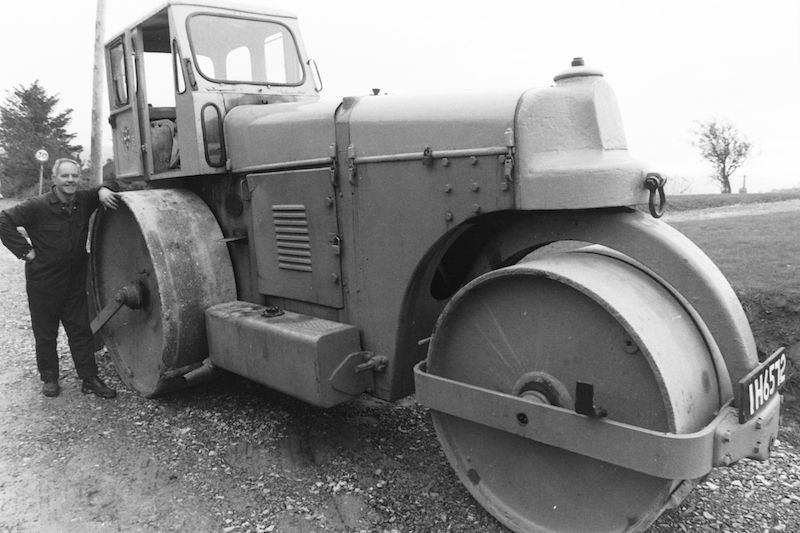
The massive roller that Peter Kelly drove all his life for the Donegal Co. Council. Photo Brian McDaid.
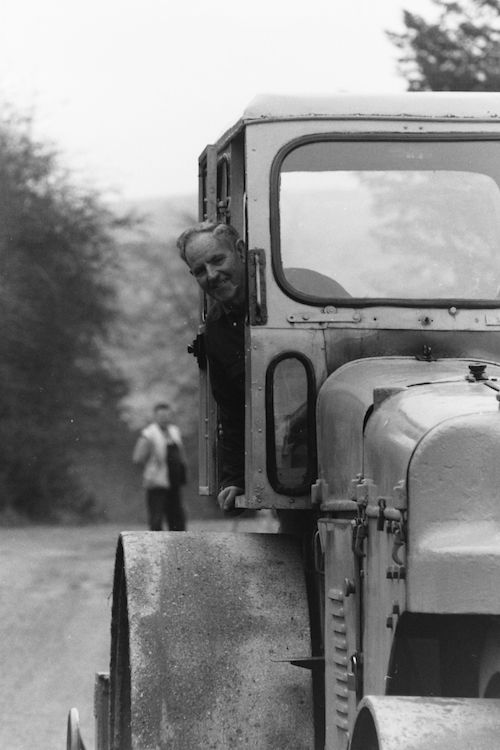
Happy at work The Late Peter Kelly in typical pose leaning out the door of the big council roller at his work. Photo Brian McDaid.
Dressed in his boiler suit, he went about lubricating all the different grease points on this time travel machine a symbol of an era of pride in your work. This quiet council worker started to tell me about his days on the road for the Donegal County Council. And driving the council roller, registration IH 6572.
Some 26 years on and looking through a box I came across these old black and white Kodak negatives of this beautiful old roller which I captured on and old FM2 Nikon camera. Back then it was developer at 68 degrees in the darkroom that brought this picture alive this week that old black and white negative opened up memories with the help of a film scanner and Adobe Photoshop.
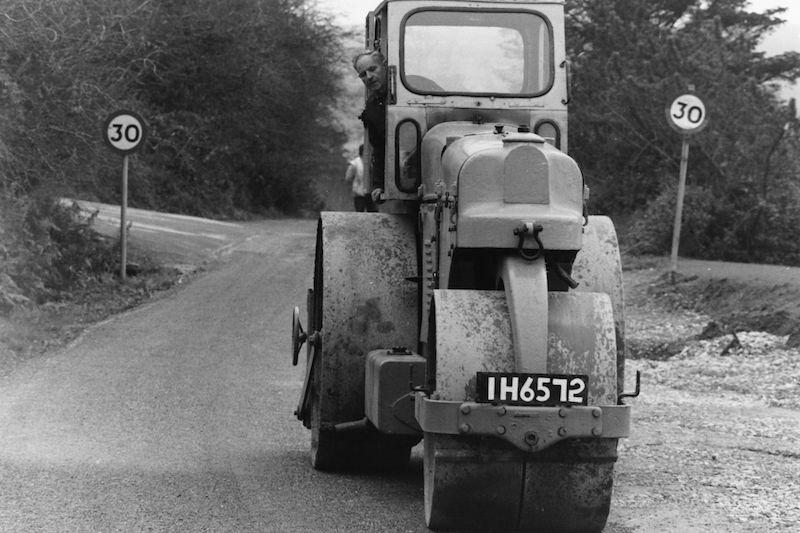
Pride in the job, Peter Kelly as the wheel of the roller as he works on levelling the surface in Glencar, Letterkenny over a quarter of century ago. Photo Brian McDaid.
The mono memories show the roller driver in his typical pose leaning out the door of the cab, his hand resting on the wheel arch inches above the big wheel. Steering the big low geared steering wheel as the big vintage roller takes the job in its stride, levelling and compacting the surface in its path. Today walls are in place and trees have matured around the road that was new in 1994.
Those old vintage rollers worked on pure weight and the massive flat metal wheels had a unique sound to it as it made its way over surfaces. In 1994 the time Peter Kelly was working on the road in Glencar he wasn’t far of retirement. The roller he was driving that day was the one that he drove all his working life for the Donegal Council.
The Aveling & Barford built diesel roller might have been registered to the Donegal Co Council, but Peter Kelly treated the roller as his own such was the care that he took of it and the pride that he took in his job as the roller man on the roads for the council.
Peter was originally from the Crossroads and his wife Anne originally was from Glenties. They set up their home in Glenmore outside Ballybofey. In the days before low loaders to transport the roller from roadworks to roadworks Peter drove the roller on the road from job to job, in the early years he also drew a workman’s hut on wheels behind the roller which Peter lived in on distant job locations in Donegal. Peter could be away for weeks on end on locations in Donegal where he got to know many friends.
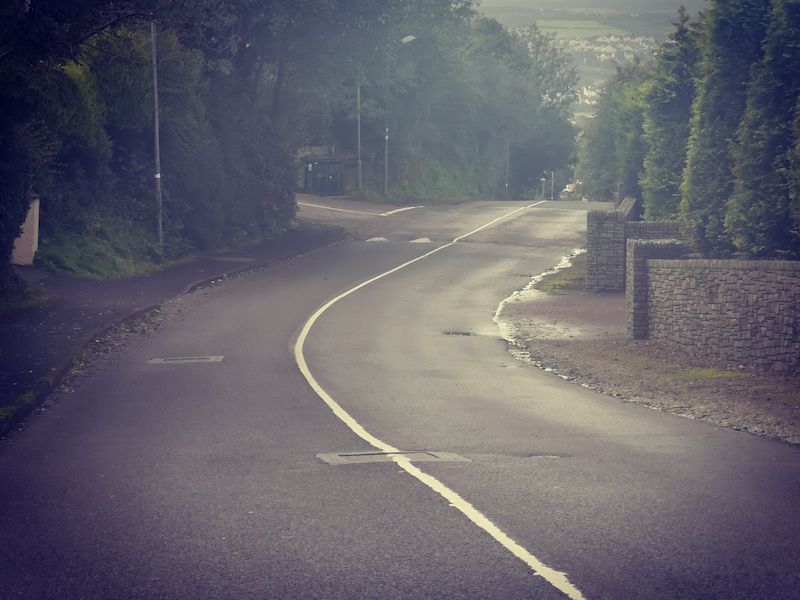
The road in Glencar today with wall and mature trees that the late Peter Kelly worked on before he retired with his trusty roller for Donegal Co Council. Photo Brian McDaid.
With a top speed of four and half miles per hour (on a good day) Peter was always on the move. he even thought nothing of taking the roller home with him much to the joy of his children who could hear the unique rattle of the big metal wheels of their daddy’s roller coming out of Ballybofey long before any of the rest of the children in their class would see the sight of the roller going past the window of their classroom at Dooish National School.
They inherited a pride that their father had in his job and just thought it was the best job in the world to be heading out every day with a lunch bag over his shoulder full of scone bread that his wife Anne made on a Stanley Range at their home. And the heat for that range was reused to dry clothes on one of those clothes-lines on pulleys that hung above the range, drying washing, drying work clothes that got wet. To be getting behind the wheel of the roller which put the finishing touch to many the mile of tar in Co. Donegal was a job that Peter Kelly was just cut out for.
Putting this memory together this week I don’t know which gives me the most joy – finding these old negatives and developing them or following a feeling this week that ended up tracking down the old original nameplate from the bonnet of this beautiful piece of history which Peter Kelly’s family still have.
This was a nameplate which Peter preserved all the days he drove the roller with pride which he made a carrying plate for out of mahogany which for the front of the roller. The prancing horse which was the logo for Aveling & Bradford who made the diesel engines was already gone from the roller when we took the photo all those years ago, partly for fear it would be pulled damaged where it would be sitting on location overnight in different locations and partly because Peter probably knew that no one would miss it only himself.
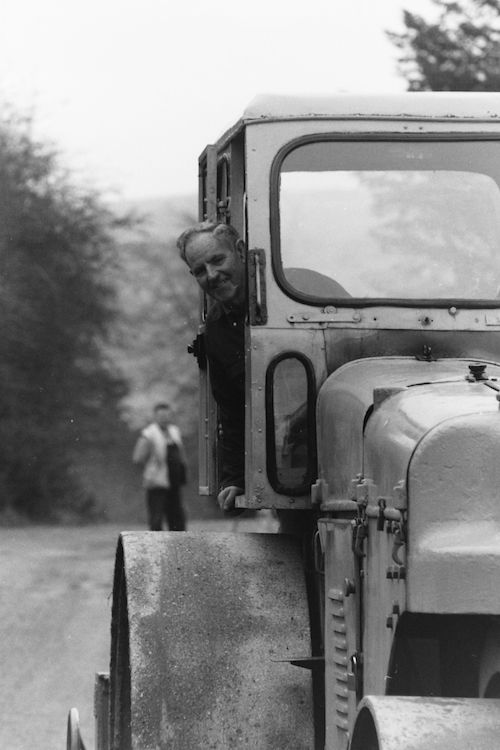
Happy at work The Late Peter Kelly in typical pose leaning out the door of the big council roller at his work. Photo Brian McDaid.
In retirement, Peter polished the prancing horse complete with its motto ‘invicta’ which was the brand for Aveling & Barford and the varnish still shines from the mahogany 25 years on from the wood that Peter cut and shaped to fit the front of his roller.
So who was first?
Some will identify the prancing horse with a different and slightly faster mode of transport that of the famous Italian Ferrari brand.
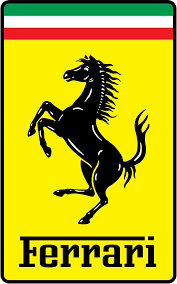
Ferrari’s prancing horse symbol can be traced to the Italian World War 1 fighter ace called Francesco Baracca who painted a black prancing horse onto the fuselage of his plane.
In 1923, a car-loving Italian from Modena called Enzo Ferrari met the mother and father of Baracca and they suggested that he did the same to his racing car which were Alfa Romeos it would give him good luck. Ferrari did so and added the splash of yellow, the colour of his birthplace, Modena. When Enzo created his own racing car in 1947 evening though his car were the fastest on the road, there is a good chance that Peter’s roller, be it a bit slower was on the road before Ferrari with the prancing horse on the bonnet making the roads of Donegal, not to the sound of a Ferrari engine but that unforgettable rattle of the metals wheels of a Aveling & Barford Roller
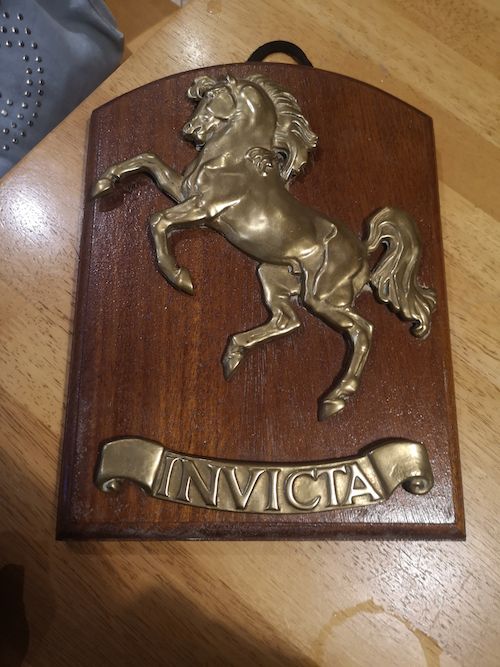
A lifetime on the road for the Donegal County Council driving an old diesel roller preserved in memory by the old name plate from the bonnet of his diesel roller that Peter looked after all his working life on the roads of Donegal. Photo Brian McDaid.
Happy motoring folks.








